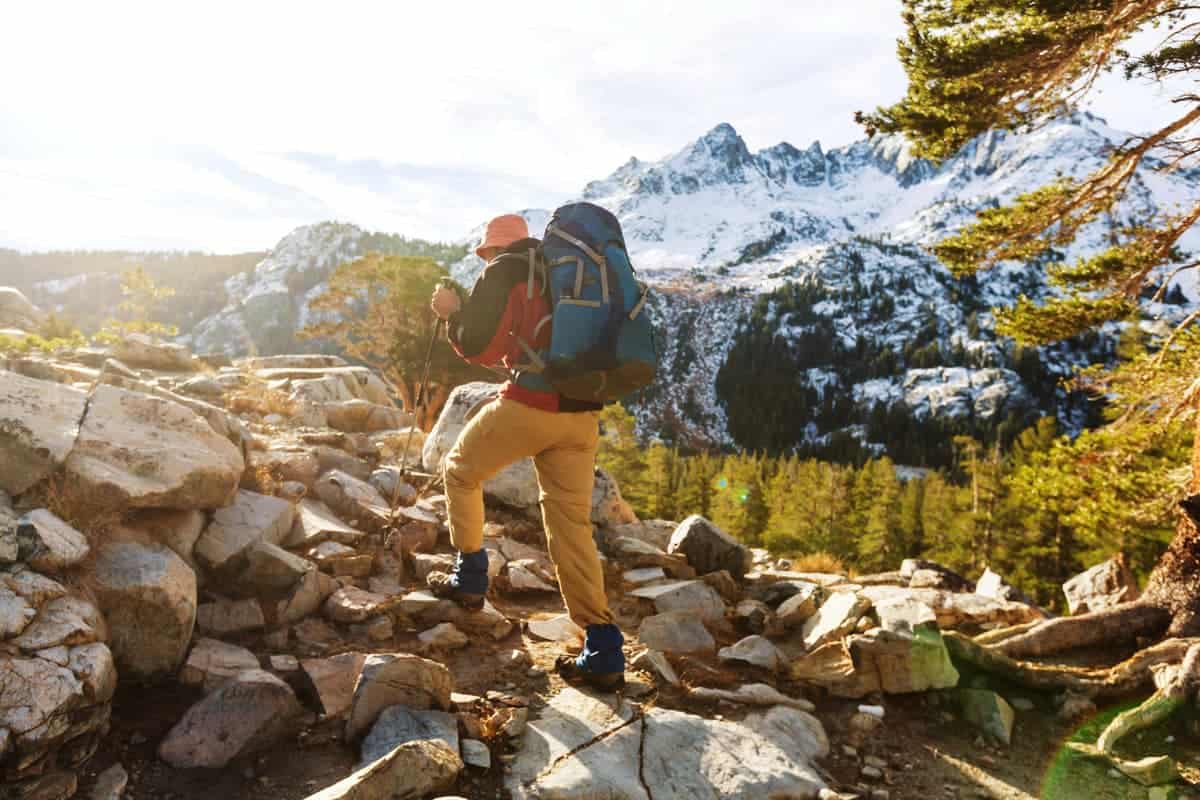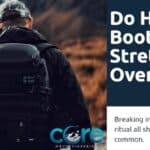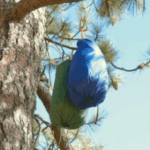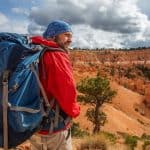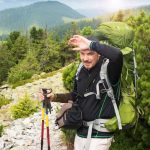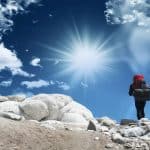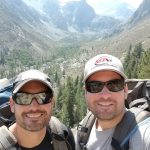Once you start backpacking, you’ll soon develop a list of dream hikes.
I love backpacking, and I’m fortunate enough to live near the Sierra Nevada mountain range, which has some of the most beautiful trails in the world. But that doesn’t mean I don’t want to find new backpacking locations that will blow my socks off.
We don’t want to waste our time and money going on backpacking trips that are not top-tier. So, let’s get into it!
Main Takaways
- The U.S. offers a variety of backpacking trips across different terrains and ecosystems.
- Proper preparation ensures a safer and more enjoyable backpacking experience.
- Backpacking is an opportunity for adventure and connection with nature.
Top Backpacking Destinations in the US
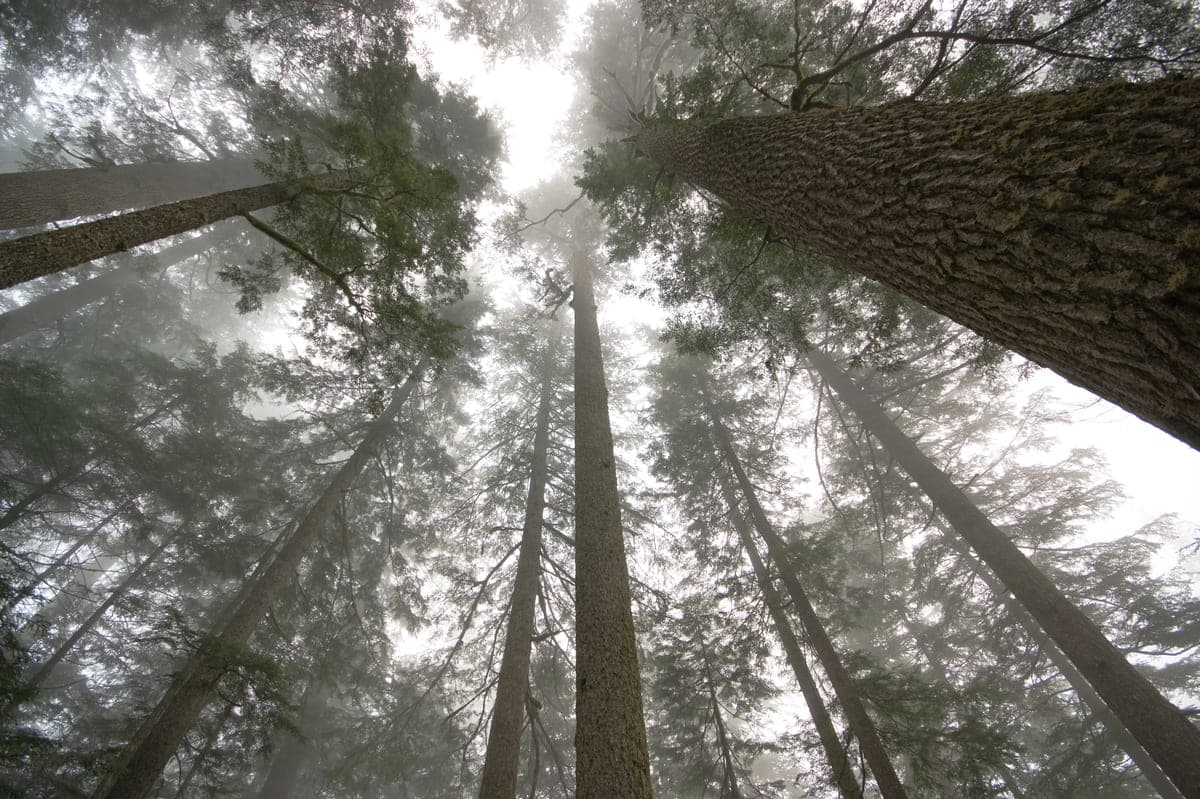
The Pacific Northwest’s Wonderland
Olympic National Park beckons with its Wonderland Trail, an immersive route that circles Mount Rainier. You’ll traverse through lowland forests and high alpine terrain, with possible sightings of the local wildlife.
It’s a strenuous journey, cushioned by mesmerizing views that are well worth the sweat.
California’s Sierra Majesty

This trail guides you through some of the park’s most iconic landscapes, including the breathtaking Half Dome and the serene Tuolumne Meadows.
Core Mountaineering Pro-Tip: Setting out on the full journey through the California wilds is a serious commitment, often taking around three weeks. Gear up for this extended adventure to fully immerse yourself in the wilderness experience.
The Rocky Mountains’ Rugged Paths
Head over to Glacier National Park for a thrill on the Highline Trail, or Rocky Mountain National Park for the Pawnee And Buchanan Pass Loop.
Each path in the Rockies will challenge your endurance with its rugged, steep climbs and high-altitude passes. Yet, every step is met with views that stretch across miles of mountain majesty.
The Southwest’s Red Rock Cathedrals
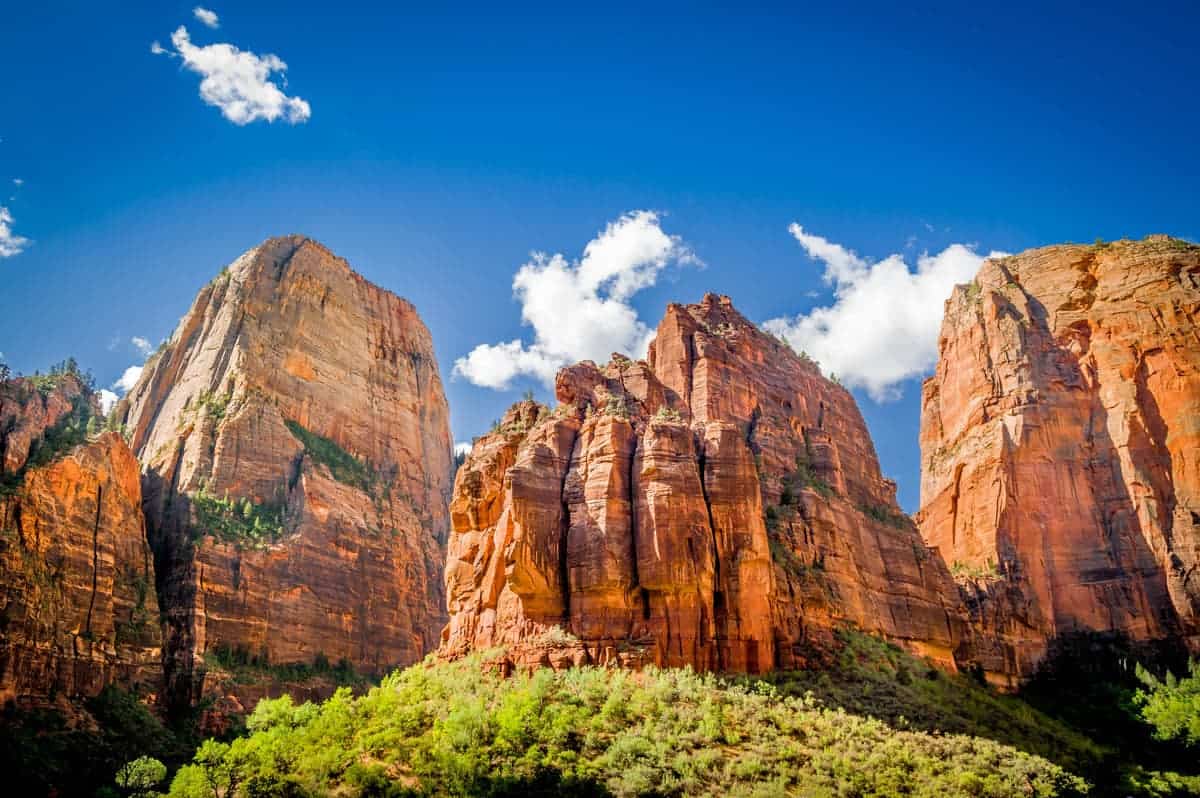
Zion National Park in Utah offers a dramatic change of scenery with its towering red rock formations.
Furthermore, the park’s Angel’s Landing trail isn’t for the faint of heart, with dizzying heights and narrow pathways, but the panoramic views from the top are nothing short of divine.
The Appalachian Trail’s Historic Journey
Although stretching over 2,000 miles, you don’t need to tackle the entire Appalachian Trail to experience its beauty.
Take on a section, like the renowned 100-Mile Wilderness in Maine, and savor the dense forests, remote lakes, and the peace that comes from being out on one of America’s oldest trails.
You can find our article on the best Long-Distance Hiking Trails USA here. We break down what hikes to start with along with which ones you should avoid at first.
Planning Your Backpacking Trip

Determining Your Itinerary
Creating your itinerary isn’t just about pinning locations on a map; it’s fine-tuning your adventure. You should consider the duration and choose a trail that suits your time and fitness level.
For instance, the 100-Mile Wilderness in Maine could call for 7 to 10 nights, or the Mount Sterling Loop Trail in the Smokies might be ideal for a shorter 2-3 day venture.
What to Pack?
Focus on the essentials for your gear. Ensure you always carry the following items:
- Map and compass/GPS
- Tent or bivy sack
- Sleeping bag and pad
- Stove, fuel, pot, and utensils
- Enough food and a way to purify water
- Layers for all conditions
- First aid kit, knife, and whistle
Safety Considerations and Emergency Prep
Always check the weather forecast and leave your itinerary with someone reliable.
Gear up with a first aid kit. For areas like the Timberline Trail or Desolation Wilderness, where campfires are prohibited, know the specific rules and regulations to ensure you’re prepared for emergencies.
Securing Wilderness Permits and Reservations
Some spots require a wilderness permit. Reserve these well in advance, as popular trails like the ones in California’s Lost Coast get booked quickly.
Check each park’s regulations for permits and campground reservations—being prepared means you won’t be turned away at the trailhead.
Seasonal Considerations
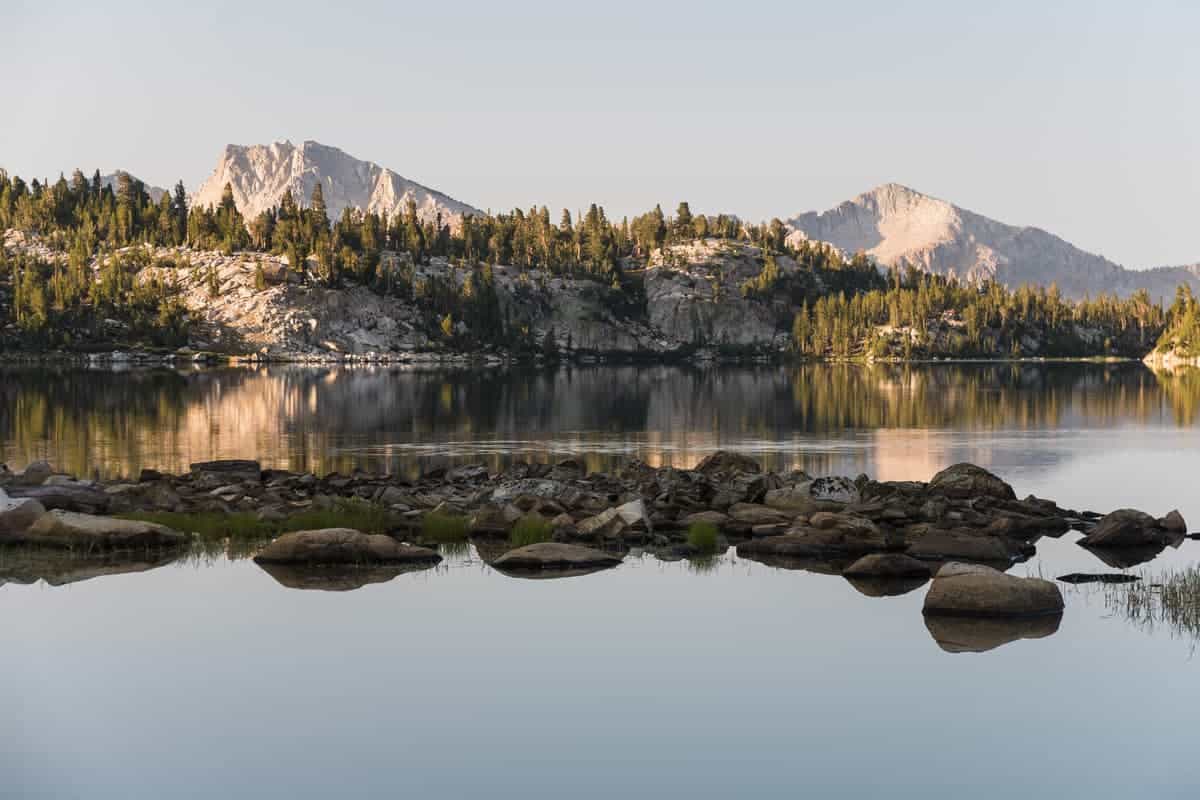
Best Times to Visit Various Regions
- The Pacific Northwest: September is a sweet spot for Washington state trails. You’re looking at a lower chance of rain and mild temperatures. By then, most of the snow has melted, making alpine passes accessible.
- California High Sierra: The John Muir Trail is epic, but snowpack can linger. Aim for mid-July to September to ensure clear trails. Earlier, and you might have to travel through snow.
- Rocky Mountains, Colorado: Wildflower season in July is breathtaking, but crowds peak. September offers awesome trails and golden aspen trees with a side note – nights start getting chilly, so pack warm gear.
- Great Smoky Mountains: This area is a gamble with weather, but again, September is a solid choice. You dodge the heavy summer humidity and the trails are less crowded after the summer vacationers head home.
Backcountry Camping Tips
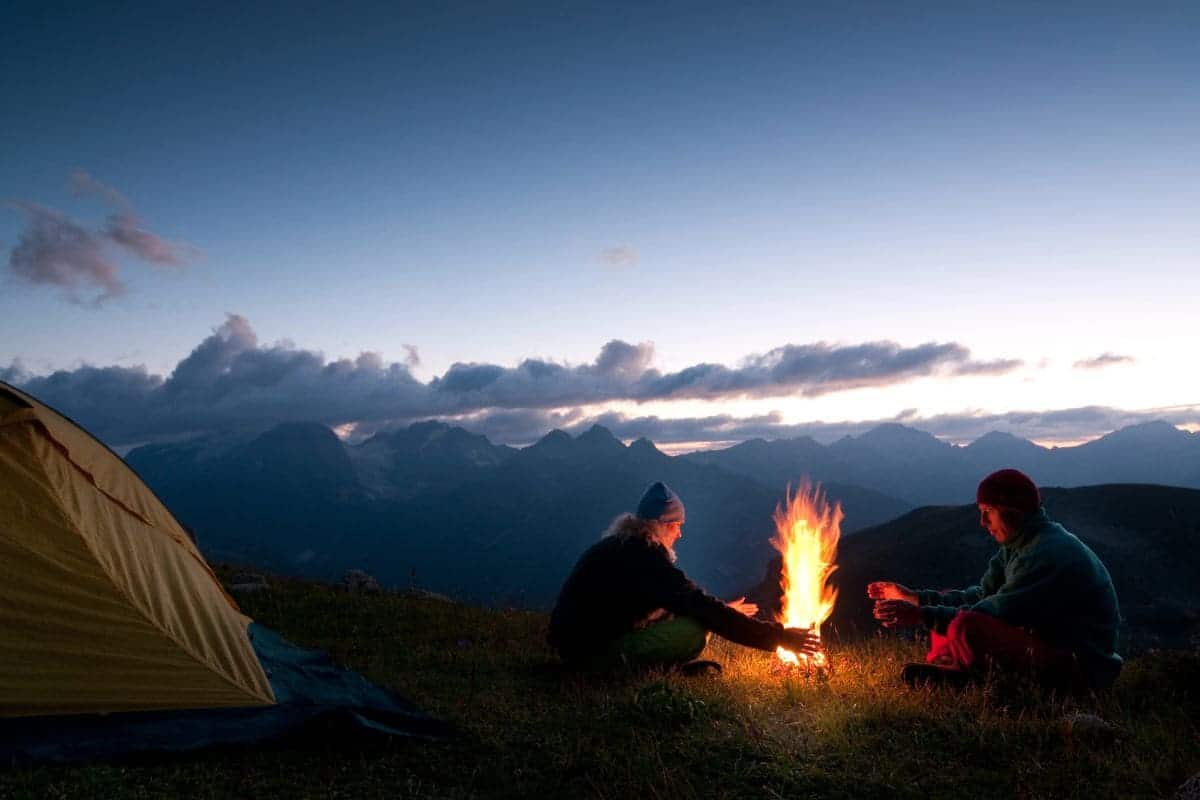
In backcountry camping, your experience heavily depends on how well you set up camp and manage your food. Keep these key tips in mind to ensure a great trip.
1. Choosing the Right Campsite
When you’re looking for where to pitch your tent, stick to designated campsites whenever possible to minimize your impact on the land. These spots are chosen to protect you and the environment.
If you’re in an area where dispersed camping is allowed, follow these pointers:
- Stay at least 200 feet away from lakes and streams to protect these areas.
- Look for a site that is not visible from trails or water to preserve the wilderness experience.
2. Food Storage and Leave No Trace
Managing your food properly is crucial in the backcountry. Animals are curious, and the last thing you want is a bear rummaging through your snacks. Use these strategies:
- Bear canisters or bear bags, essential in many parks, keep both your food and wildlife safe.
- Always secure your food, toiletries, and trash. Hang them from a tree or use a bear-proof storage box at least 100 yards from your campsite.
Remember the principles of Leave No Trace. Pack out all garbage, leftover food, and litter. If you’re packing it in, you’re packing it out.
Your goal is to keep the great outdoors pristine for fellow adventurers and future visits.
Special Experiences
Hiking America’s Iconic Trails
Let’s look at the table below of some of the most iconic trails.
| ail Name | Description | Distance | Elevation Change/Gain | Time Commitment | Notable Features |
|---|---|---|---|---|---|
| John Muir Trail | A 211-mile journey from Yosemite Valley to Mount Whitney, known for its staggering elevation changes. | 211 miles | More than 47,000 feet | Around 3 weeks | Serious climbing |
| Teton Crest Trail | Offers awe-inspiring views of the Grand Teton National Park, less crowded with rugged beauty. | Approximately 40 miles | Not specified | Not specified | Wildlife: moose, elk, bears |
| Appalachian Trail (100-Mile Wilderness) | Part of the trail in Maine, known for being remote and beautiful. | Technically 93 miles | Roughly 15,000 feet | Not specified | One of the most remote and beautiful sections |
Wilderness and Wildlife Encounters
In Great Smoky Mountains National Park on the Mount Sterling Loop Trail, you’re immersed in a diverse ecosystem. You might have encounters with the elusive black bear or watch a hawk soar overhead as you traverse this intermediate-level path.
Stargazing and Night Skies
Under the vast expanse of an uninterrupted night sky, wilderness areas like those in White Mountain National Forest transform. The Pemigewasset Loop is a particularly mesmerizing place where the Milky Way seems close enough to touch once the sun sets.
Core Mountaineering Pro-Tip: Safety should always be your top priority, especially going about night hiking. Make sure you are fully prepared with the right gear and knowledge before setting out after dark.
Alternative Adventures
Off-Trail Loop Hikes
For an unforgettable journey, loop hikes are where it’s at. These self-contained trails mean you end where you started, which is super handy for logistics.
The Four Pass Loop in Colorado’s Maroon Bells-Snowmass Wilderness will dazzle you with alpine landscapes and challenging terrain.
Prepare well, this 26-mile journey traverses four mountain passes over 12,000 feet.
Coastal Treks and Beach Backpacking
Fancy the sound of the ocean as you fall asleep? The Lost Coast Trail in California is your dream come true.
It’s a rugged 24-mile stretch of Pacific coastline where mountains drop straight into the sea. Be sure to keep an eye on the tide schedules; they’ll dictate your day more than your trail map will.
Look out for trails in the Rocky Mountains or Sierra Nevada, which will take you above the tree line to the overlooking view of 360-degree panoramas.
High-Altitude Challenges
Seeking thin air thrills? High-altitude hikes offer you not just a physical challenge but also some of the most jaw-dropping views. Remember to acclimatize properly to prevent altitude sickness.
Accommodations and Budgeting

Finding Budget-Friendly Options
To keep your spending in check, research and compare various accommodation options. Here are some specific tips:
- Hostels can be a wallet-friendly choice and are often located centrally.
- They’re a great way to meet other travelers too.
- Considering camping or glamping sites can drastically reduce costs and offer a more authentic nature experience.
- Check out online platforms for room rentals; they often have budget options that are cheaper than hotels.
Core Mountaineering Pro-Tip: When visiting major cities like New York or Los Angeles, consider staying just outside the central areas. This can lead to significant savings on your accommodation costs without sacrificing convenience.
When Splurging on Comfort Makes Sense
Sometimes, paying a bit more for accommodation can be beneficial for your travel experience. Always remember, a good night’s sleep can be vital to get the most out of your days exploring.
- After a long trek, you might value a private room in a boutique hostel or a budget hotel.
- Glamping might appeal if you long for the outdoors with added comfort; it’s like camping but with a proper bed and often, some luxury!
- If you’re constantly moving locations, consider the time-saving element of staying closer to the action or transport hubs.
Travel Logistics
Transportation Options
- If you’re flying, check for the nearest airport to your backpacking destination and consider renting a car for the final leg of your journey.
- Road trips can offer a more scenic and flexible route, but be prepared for long drives, especially when heading to remote areas.
- For a more sustainable option, research public transportation like buses or trains. Availability varies widely by location.
Vehicle Parking and Security
- Research parking options before you arrive. Many trailheads have designated parking areas, but they can fill up quickly during peak seasons.
- For extended trips, ensure that the parking area is safe for long-term parking; some locations may offer paid parking with added security.
- Always store valuables out of sight or take them with you, and double-check that your vehicle is locked and secure.
Frequently Asked Questions
Which U.S. backpacking trails offer stunning waterfall views?
For cascading falls, the Mist Trail in Yosemite National Park is unbeatable. It treats you to Vernal and Nevada Falls. Another contender is the Columbia River Gorge area in Oregon, home to numerous waterfalls, including the famous Multnomah Falls.
What are some top-rated backpacking destinations in the U.S.?
Sky Pond in Colorado’s Rocky Mountain National Park is a gem with high star ratings. The Teton Crest Trail in Grand Teton National Park, Wyoming, is another must-see, boasting breathtaking mountain landscapes.
Could you recommend the best 2 to 3-day backpacking trips in the States?
The Mount Sterling Loop Trail in Great Smoky Mountains National Park, Tennessee, is ideal for a 2 to 3-day trip. Alternatively, consider the Enchantments in Washington State, with its alpine lakes and peaks.
Where should beginners start their first backpacking adventure in the U.S.?
Beginners can start with the Low Gap Trail to Mount Cammerer in the Smokies, which offers a moderate challenge and rewarding views. Shenandoah National Park’s Old Rag Mountain is also beginner-friendly.
For a memorable backpacking experience, which U.S. location is a must-visit?
Don’t miss out on the John Muir Trail, which traverses through some of the most exquisite parts of the Sierra Nevada. Its length offers a comprehensive experience, from Yosemite Valley to Mount Whitney.
Where do most backpackers congregate in the United States?
Backpackers often flock to the Pacific Crest Trail, which stretches from Mexico to Canada through California, Oregon, and Washington. The Appalachian Trail on the East Coast is another popular gathering spot due to its community and historic significance.
Final Thoughts – Equip Yourself With Knowledge And Gear
To experience the most iconic US dream trails, being well-prepared is necessary, from knowing the terrain to smart packing.
Therefore, it is best to equip yourself with knowledge and gear. As you prepare for your journey, prioritize comprehensive route planning and gear essentials to ensure a fulfilling and safe experience. The trails of the U.S. not only challenge your physical limits but also invite you to be one with nature!

